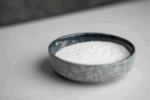Stress and Mood: A Formulator’s Guide

From anti-stress to pro-mood
Plus, add a little energy and focus!
We can make stress products not only anti-stress but also pro-energy, mood and focus.
While we typically think of stress as “bad”, the reality is that some stress can be positive (e.g. resistance training, HIIT, athletic competition, etc.), as well as necessary. Exposure to outside stressors helps the body become stronger and more resilient. The “good and bad” stressors can definitely change our mood, for better or worse. Here is where we break down some of the misconceptions about stress and mood in this quick guide for formulators.
When stress becomes problematic is when it becomes chronic, or when our feeling toward the stressor is negative (i.e. feeling like it’s too much to handle). Prolonged psychological stress from COVID lockdowns, financial insecurity, toxic relationships, or family pressures can impact our lives in many ways. For example, sleep, immunity, sugar cravings, weight management, anxiety, depression, focus, attention, cognitive performance and gut health(1, 2).

So the question is: how do I formulate stress and mood products that deliver the greatest impact on all the other axes? And how do I inspire consumers to buy a product when “stress” isn’t exactly aspirational?
We often cannot avoid the stressor, so we must improve our response to that stressor. That can include acknowledging the stressor, and how you’re feeling, and using those feelings as a signal to reach out to friends, family, neighbors, coworkers, do volunteer work, and more(4). Others might entail meditation, breathing techniques, daily walks, intense exercise and more.
In the supplement world, a stress and mood formula often starts with adaptogens. Adaptogens help us adapt to physical or emotional stressors. Adaptogens are fantastic, but they can lack an impactful sensory experience.

In 2022, we will formulate “beyond adaptogens” by adding a greater energy and mood experience.
After we resolve the stress component, we can further consumer value by increasing the energy and mood sensory experience.
The Past is History When it Comes to Stress Formulas
Past stress or mood formulas were dominated by theanine, St. John’s Wort, lemon balm, or magnesium. The supplements were primarily in capsule form but sometimes delivered in teas or powders like Natural Vitality’s Calm.
Current Mood: Ashwagandha, Kava Kava, Gotu Kola and More
Current formulas still contain past ingredients, but now have a foundation in Ashwagandha. Other inclusions are kava kava, ginkgo biloba, CBD, lemon balm, rhodiola, shilajit, GABA, theanine, 5HTP, St John’s Wort, Gotu Kola, and magnesium.
Future Formulations want to Feel it
 We all want to feel better, and we all want an active lifestyle. The goal is to handle stress and boost mood. So let’s formulate for it!
We all want to feel better, and we all want an active lifestyle. The goal is to handle stress and boost mood. So let’s formulate for it!
Past formulas have been hyper-focused on serotonin while ignoring the dopamine component. This is important because dopamine is our mood elevator and our motivator! It is the neurotransmitter drawing you out of bed in the morning and getting you to the gym. Both Dynamine™ and TeaCrine® add the energy component while also adding improved mood by activating dopamine receptors(5). Additionally, TeaCrine® has been shown in mice to restore cognitive function, dopamine and serotonin levels after prolonged stress(6)!
We’re all familiar with theanine, ashwagandha and 5HTP, but we’ve never seen this association combined with an impact on dopamine production, which may improve mood and reduce fatigue(7). This is the mechanism behind Dynamine™ and TeaCrine®. The impact on mood and energy is magnified even further when taken together with your morning coffee. While Dynamine™ and TeaCrine® are not stimulants, they pair well with caffeine and also complement each other.
[NEW] Formulas For Stress and Mood
TeaCrine® + Ashwagandha
Dynamine™ + TeaCrine® + Theobromine + Rhodiola
Dynamine™ + TeaCrine® + Ginseng + Magnesium Bisglycinate
TeaCrine® + Kava Kava + Rhodiola
The typical formula contains ashwagandha and lemon balm when we formulate for stress and mood. But we’re missing an opportunity for greater sensory impact! We all know caffeine sells because of the immediate sensory experience. Let’s apply that to stress and mood formulas. It’s simply easier to sell products we feel. Try adding Dynamine™ and TeaCrine®, and transitioning from “Stress” Formulas to “Feel Better” Formulas.
You can make your stress product not only anti-stress but also pro-energy, mood and focus.
If you’re a first-mover and want that advantage, contact us about next-generation formulations even beyond the above.
Formulate with TeaCrine®
Formulate with Dynamine™
Bernstein, 2010
Why Do We Crave Sweets When We’re Stressed?
Yuen, 2012
Emotional Agility by Dr. Susan David
Feduccia, 2012
Li, 2015
The Dopamine Imbalance Hypothesis of Fatigue in Multiple Sclerosis and Other Neurological Disorders





